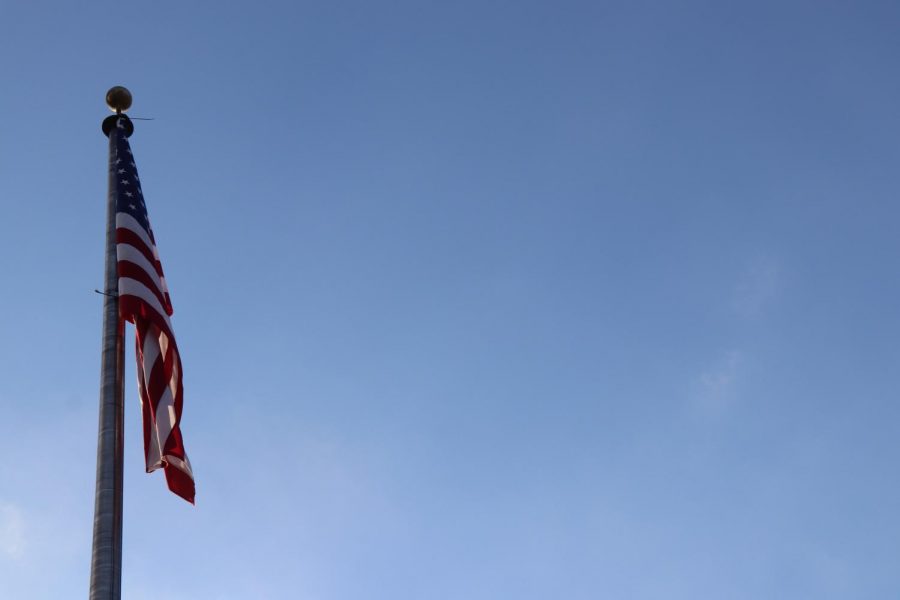Political Polarization Is Bad, and Unlikely to Stop
Around 36 percent of Republicans and 27 percent of Democrats believed that the other party was misguided enough to be a danger to the nation.
February 6, 2019
Over the past few years, political polarization has increased, creating a new divide between the two main parties in America. A 2014 Pew Research Center study found that around 38 percent of Democrats indicate consistently liberal views, from the eight percent that it was in 1994. Republicans show a similar, though less extreme trend: around 33 percent express consistently conservative views, up from 23 percent.
Furthermore, more and more people from both sides view the other side as a threat to the nation as a whole; around 36 percent of Republicans and 27 percent of Democrats believed that the other party was misguided enough to be a danger to the nation. Along with this, in a 2017 study people were more likely to see debating with the other side as “stressful,” and noted that discussion does not tend to lead to finding common ground. Likely as an effect of this, more and more people choose to surround themselves with people who share their political views, choosing to avoid the problem altogether.
This polarization has the effect of creating “us” and “them” camps, where people start to see the other side as an enemy.
Politically, this means that people are less likely to see an even compromise as fair or good because they see the other side as a threat; people prefer to see their side get a smaller victory than have both sides advance. People are more likely to accept a candidate’s bad behavior or underhanded tactics, because it can be seen as a necessary evil, or better than what the other side would accomplish. This effect could also be blamed for the fact that, according to a 2015 Gallup poll, college-educated Republicans were most likely to say that global warming was generally exaggerated. As the New York Times points out, when people do not fully understand an issue, “they tend to adopt the views of the leaders of the party they already identify with.”
The desire to be around people with a similar mindset has and will lead to an increase in this political divide. When people refuse to communicate or try to find common ground, both sides begin to go towards extremes, as there is less moderation within the group as a whole.
The internet adds another layer of complexity to this issue as, behind a screen, it is far easier to dehumanize someone. Confirmation bias leads to people who have had negative experience with some members of a party to cast the entire party in that light, meaning that the differences and insults that are made over the web can soon leak into physical and face to face interactions.
These issues are unlikely to be solved by simple interactions and attempts to find common ground, though it is important to note that people may not be as partisan as the polls suggest; people from the extremes on both sides are more likely to vote, meaning that their vote has more effect than someone who has a less polarized stance on a party and does not vote. Political identity has become a social issue, due to the negative views of the other side.
The solutions that would stop this effect in the government are unlikely to move forward; some people believe that it would require a reform of the political system to force more cooperation between parties, removing the “spoils system” and reserving seats and places for the other party.
For people’s personal lives, a willingness to see the other side, engage in politics, and research issues without following the top opinion would be necessary; something that, given the increasing divide and less bipartisan views of most voters, illustrates a grim future for polarization in America.






Sparky • Feb 6, 2019 at 8:47 pm
I am glad that someone is finally bringing this up! If we want America to be a better place both Democrats and Republicans need to be well-educated on the topics at hand and have to be able to talk and work out solutions regarding those issues for the good of the American people. There are too many voters and politicians on both sides of the aisle being pigheaded and struggling to look fairly at the arguments for each side that it has turned into a “my way or the highway” situation, which is not good for America as a whole.
Gavin J. Oliveira Sunderland • Feb 6, 2019 at 5:44 pm
Thank you for making this more widely known, it is a real shame that people cannot get along, have respect and find common ground or recognize good will. I feel it is a strain the American people that must cease.
Luca Blue Tidrick-Schmidt • Feb 6, 2019 at 4:33 pm
I believe it’s important to have a well rounded view on politics. It is also very important to surround yourself with people who think differently than you because it will help you gain perspective and help avoid having “group think” debates/discussions.